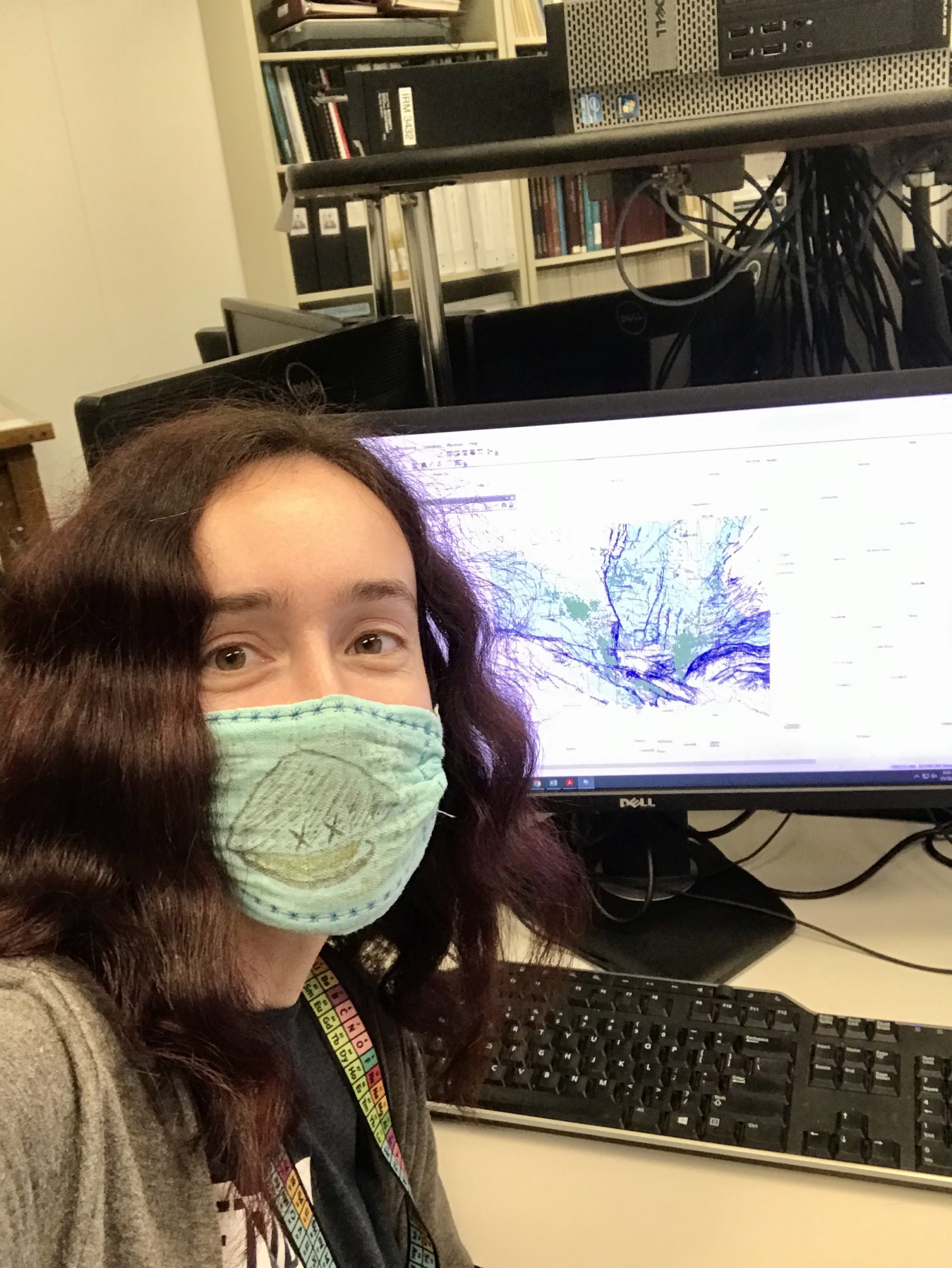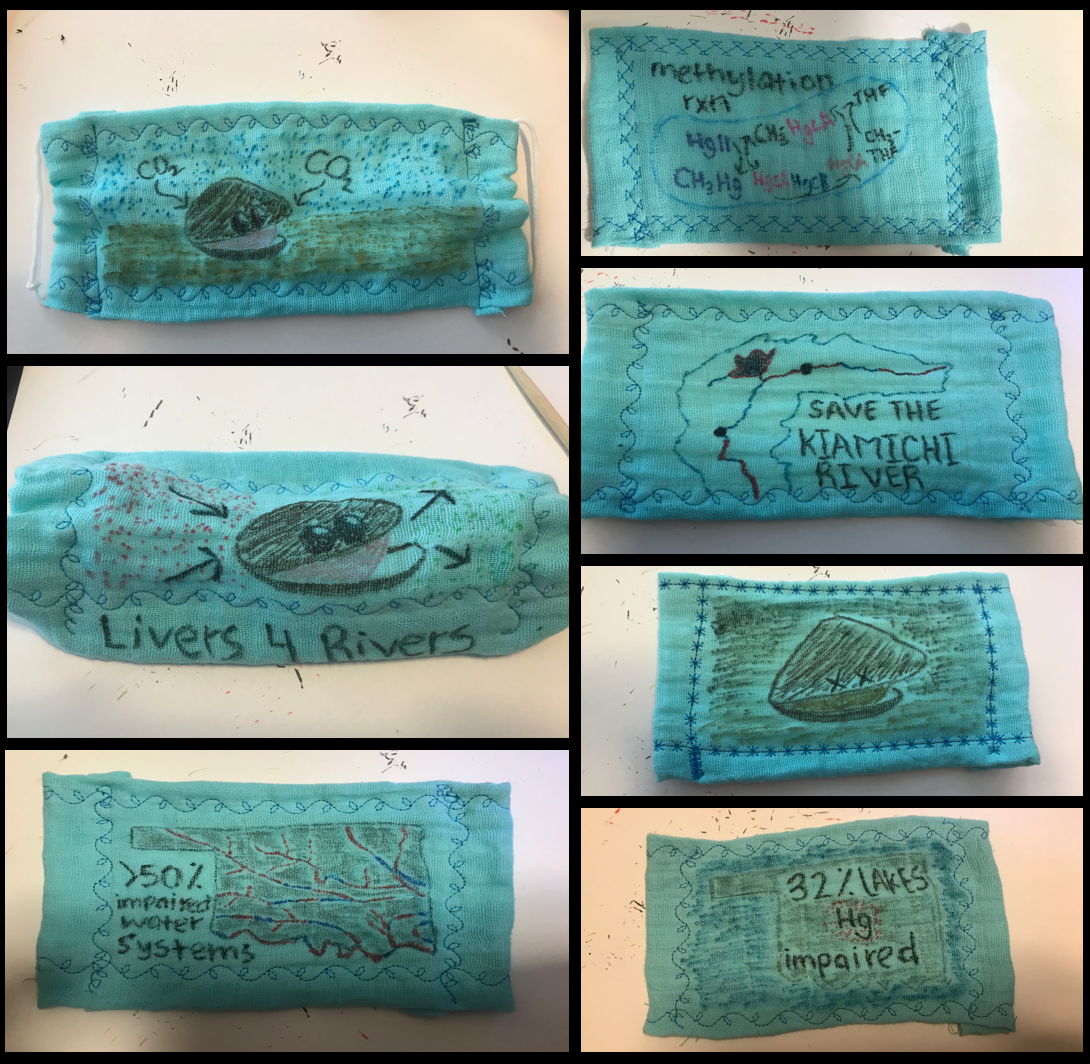16 December 2020
#DrawnToGeoscience: SciComm with masks
Posted by Shane Hanlon

Mussel mask selfie. Credit: Lauren Haygood
By Lauren Haygood
I didn’t think I’d ever use a mask to communicate science, but here I am! Due to COVID-19, masks became a requirement for in-person activities. I enjoy science communication and outreach, and I knew I would still be doing in-person activities this semester, so I decided I would give “masked science” a try.
I’m a graduate student at The University of Tulsa. The Geosciences Department is my home department, but I am evenly split between the both the Geosciences Department and the Chemistry and Biochemistry Departments. I study the biogeochemistry and hydrology of the Kiamichi River, where I get to analyze the metal content in water, sediment, soil, mussels, and lichens, as well as do hydrological modeling. I’m passionate about freshwater systems in Oklahoma; primarily raising public awareness of the state our water systems are in, and how that relates to water availability, aquatic ecosystems, human health, and the impact of climate change. I wanted my masks to reflect my thesis research, and water systems in Oklahoma, so I decided I would make my own masks. I dug out my old sewing machine, and began sewing masks.
I chose the color blue because the masks were primarily going to focus on water systems. I kept the shape simple, and just made sure they fit properly on my face. I used permanent fabric markers for the drawings so that I could wash my masks without losing the drawing.
For the drawings, I referenced GIS maps and old sketches I had made, and did my best to copy them onto the sewed masks. It was a challenge, as space was limited on the mask, and the drawings needed to be kept simple in order to be viewable. This forced me to think about the purpose of each drawing, and decide the main point I would be making.

Some of the masks sewed for science communication. Topics include water quality, mussels, mercury methylation, and more! Credit: Lauren Haygood
In the end, the masks covered Oklahoma water quality, the mercury methylation reaction, the Kiamichi River, and the different roles mussels play in water systems.
I wore these masks every day this semester, whether I was working in the lab, teaching, or out in public. “Masked science” turned out to be a great way of science communication, and a form of communication where I didn’t need to initiate it. People would see my mask and ask questions, or ask me to explain more about the particular drawing, and I was more than happy to oblige. I’d even post selfies on social media, and would get questions about my masks. The masks were fun and sparked conversations about water quality, mussels, mercury, and even climate change!
I plan on sewing more masks over winter break, and expanding the topics covered with the masks. I’m thinking of adding in lichen-related masks, as lichens can be used to study atmospheric deposition (in my case, metals), which is something I find interesting, and I think others will too.
–Lauren Haygood is a graduate student at The University of Tulsa (TU) and Voices for Science Advocate. Find her on Twitter and Instagram.


 The Plainspoken Scientist is the science communication blog of AGU’s Sharing Science program. With this blog, we wish to showcase creative and effective science communication via multiple mediums and modes.
The Plainspoken Scientist is the science communication blog of AGU’s Sharing Science program. With this blog, we wish to showcase creative and effective science communication via multiple mediums and modes.